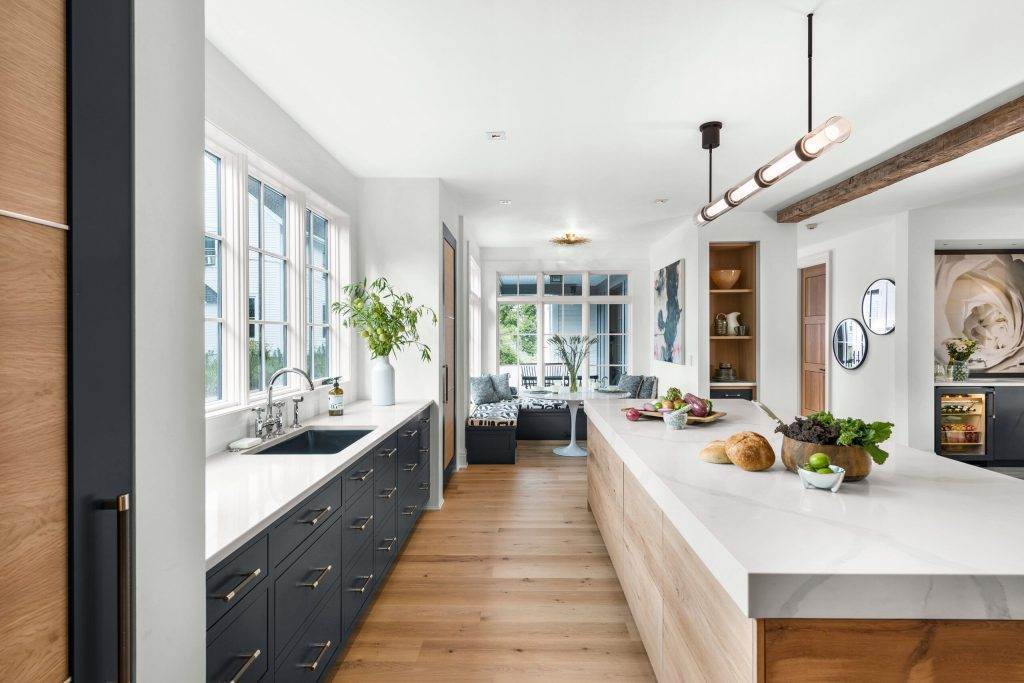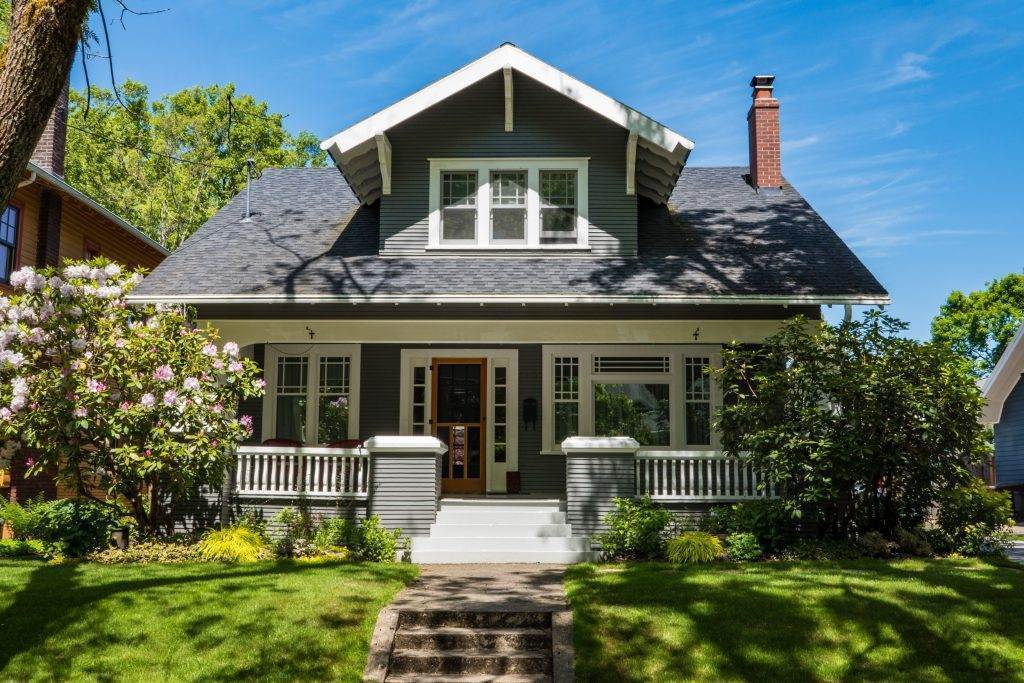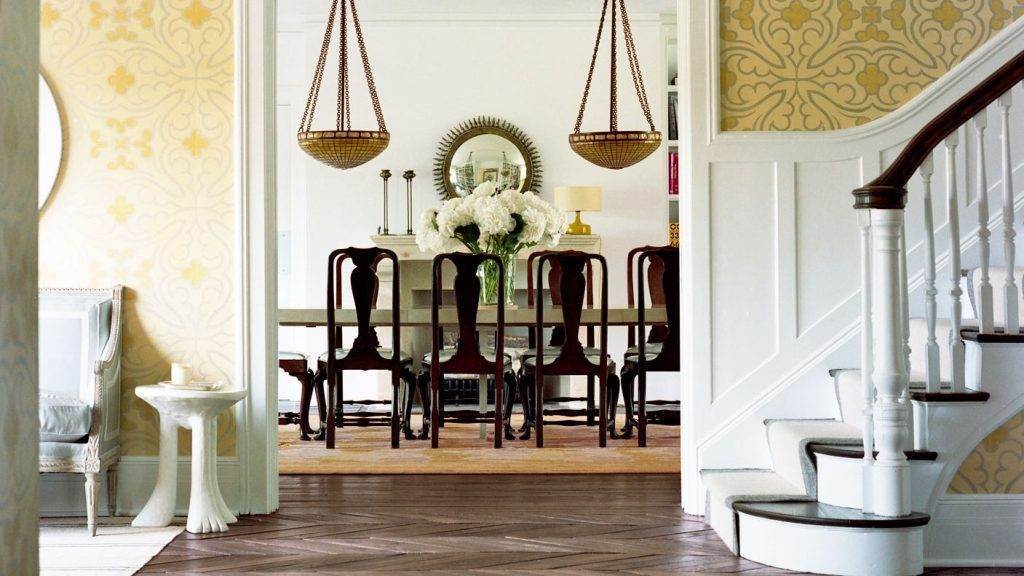Determining the initial renovation project for your old house can be a daunting task, with countless variables to consider. In this article, we will explore the crucial aspects that dictate what should be renovated first in your aging property. By taking a comprehensive approach and prioritizing functionality, safety, and aesthetics, you will gain valuable insights on how to commence the renovation process, ensuring a successful transformation of your old house into a modern and efficient abode.

This image is property of www.bankrate.com.
Roof and Exterior
Assess the condition of the roof
The first step in renovating an old house is to assess the condition of the roof. Inspect for any signs of damage such as missing or damaged shingles, leaks, or sagging areas. A thorough inspection will help you determine if there are any immediate repairs or if a complete roof replacement is necessary.
Repair or replace the roof if necessary
If the roof shows signs of significant damage or wear and tear, it is essential to either repair or replace it. Delaying roof repairs can lead to further damage to the interior of your home, such as water leaks and mold growth. Hire a professional roofing contractor to conduct the necessary repairs or replacement using high-quality materials to ensure the longevity of your roof.
Inspect and update the exterior walls
After addressing the roof, it is crucial to inspect the exterior walls for any signs of damage, such as cracks, rot, or peeling paint. Repairing or replacing damaged siding or stucco will not only enhance the aesthetics of your home but also protect it from moisture and other elements. Consider updating the exterior walls with weather-resistant materials that require minimal maintenance, such as fiber cement siding or vinyl cladding.
Upgrade windows and doors
Old windows and doors not only detract from the overall curb appeal of your home but can also impact its energy efficiency. Consider upgrading to double-paned windows and insulated doors to improve insulation and reduce energy costs. Additionally, modern windows and doors offer improved security features, such as reinforced frames and advanced locking systems, providing better protection for your home.
Plumbing and Electrical Systems
Check the plumbing system for leaks and blockages
Old houses often suffer from plumbing issues, such as leaks or blockages in the pipes. Inspect the plumbing system thoroughly, checking for any visible leaks, low water pressure, or signs of water damage. Addressing these plumbing issues early on can prevent more significant problems in the future and ensure the proper functioning of your home’s water supply.
Upgrade outdated plumbing fixtures
Consider upgrading outdated plumbing fixtures, such as faucets, showerheads, and toilets, as part of your renovation process. Modern fixtures not only enhance the aesthetic appeal of your bathrooms and kitchens but also offer improved water efficiency. Choose fixtures with WaterSense labels, which indicate that they have been certified for water conservation.
Assess the electrical wiring and outlets
Older homes may have outdated electrical wiring, which can be a safety hazard. Evaluate the condition of the wiring and inspect outlets for any signs of damage or overloading. It is advisable to hire a licensed electrician to conduct a thorough inspection and make any necessary repairs or upgrades to meet current safety standards.
Consider rewiring if necessary
If your old house has outdated or insufficient electrical wiring, consider rewiring the entire house. Rewiring will not only ensure safety but also provide an opportunity to install additional outlets and modernize the electrical system. However, rewiring can be a significant renovation project that may require professional expertise and careful planning.

This image is property of s42814.pcdn.co.
Heating, Ventilation, and Air Conditioning (HVAC)
Check the functionality of the HVAC system
Evaluate the functionality of the heating, ventilation, and air conditioning (HVAC) systems in your old house. Have a professional HVAC technician inspect the equipment to ensure it is operating efficiently. Older HVAC units may need repairs or replacement to provide optimal comfort and energy efficiency.
Clean or replace air filters
Clean or replace the air filters in your HVAC system regularly. Clogged or dirty filters can restrict airflow, reduce efficiency, and affect the indoor air quality of your home. Regular maintenance of the HVAC system, including filter replacement, can prolong its lifespan and improve its performance.
Repair or replace faulty HVAC units
If your HVAC units are not functioning correctly or are past their lifespan, it may be necessary to repair or replace them. Inefficient or faulty HVAC systems can result in higher energy bills, inconsistent temperatures, and discomfort. Upgrading to newer, energy-efficient HVAC units will not only improve your home’s heating and cooling capabilities but also save you money in the long run.
Consider installing energy-efficient systems
Energy-efficient HVAC systems can significantly reduce your energy consumption and lower your utility bills. Consider installing programmable thermostats, which allow you to set specific temperatures for different times of the day, optimizing energy usage. Additionally, newer HVAC systems often come with advanced features, such as zoning, which allows you to control the temperature in different areas of your home independently.
Insulation and Energy Efficiency
Assess the insulation levels in the attic and walls
Insufficient insulation can result in energy loss and compromise the energy efficiency of your home. Assess the insulation levels in your attic and walls, as these areas are critical in preserving indoor temperature and preventing heat transfer. Consider hiring a professional to perform an insulation evaluation and recommend the appropriate insulation R-value for your region.
Upgrade insulation for better energy efficiency
Based on the assessment of your insulation levels, consider upgrading to better insulating materials. Common options include fiberglass batt insulation, blown-in cellulose insulation, or spray foam insulation. Improving insulation in your home will help regulate indoor temperature, reduce energy consumption, and enhance overall comfort.
Consider sealing air leaks
Air leaks around doors, windows, and gaps in the walls can result in heat loss during the winter and heat gain during the summer. Utilize weatherstripping and caulking to seal these air leaks, reducing drafts and improving energy efficiency. Pay special attention to areas prone to air leakage, such as around windows and doors and where different building materials meet.
Install energy-efficient appliances and lighting
Upgrading to energy-efficient appliances, such as refrigerators, dishwashers, and washing machines, can significantly reduce your home’s energy consumption. Look for appliances with ENERGY STAR certification, as they meet strict energy efficiency criteria. Similarly, replace traditional incandescent light bulbs with energy-efficient LED bulbs, which use less electricity and have a longer lifespan.

This image is property of cdn.apartmenttherapy.info.
Structural Repairs
Inspect the foundation for cracks or structural damage
An essential aspect of renovating an old house is evaluating the condition of its foundation. Inspect the foundation for any cracks, settling, or other signs of structural damage that can jeopardize the stability of your home. Foundation issues should be addressed promptly to prevent further deterioration and potential safety hazards.
Address any foundation issues
If your inspection reveals foundation issues, it is crucial to address them promptly. Depending on the severity of the damage, repairs can range from minor crack sealing to more extensive foundation underpinning or stabilization. Consult with a structural engineer or foundation specialist to determine the most appropriate solution for your home.
Check for sagging floors or walls
Sagging floors or walls can indicate underlying structural issues in an old house. Investigate any noticeable sagging and identify the cause. It could be a result of compromised floor joists, inadequate support beams, or other structural issues. Consult a professional to determine the necessary repairs or reinforcements required to restore structural integrity.
Repair or reinforce weak or damaged structures
Weak or damaged structures, such as stairs, balconies, or decks, should be repaired or reinforced as part of your renovation project. These areas are often subjected to significant wear and tear and require special attention to ensure they are safe and structurally sound. Hire a professional contractor or engineer to assess and repair any weak or damaged structures.
Kitchen Renovation
Assess the functionality and layout of the kitchen
The kitchen is often considered the heart of the home, and renovating it can add significant value and functionality. Assess the current layout and functionality of your kitchen. Identify any design flaws, inadequate storage, or outdated appliances that need attention. Consider the flow of the space, storage needs, and your cooking habits when planning a renovation.
Consider updating countertops and cabinets
Upgrading countertops and cabinets can transform the look and functionality of your kitchen. Consider replacing worn or dated countertops with durable materials such as granite, quartz, or butcher block. Evaluate your storage needs and choose cabinets that maximize space utilization and offer efficient organization solutions.
Upgrade appliances and plumbing fixtures
Outdated appliances can hinder the efficiency and convenience of your kitchen. Consider upgrading to energy-efficient, modern appliances that offer improved features and functionality. Additionally, updating plumbing fixtures, such as faucets and sinks, can enhance the overall aesthetic appeal of your kitchen while improving functionality.
Improve lighting and ventilation
Proper lighting and ventilation are essential for a functional and comfortable kitchen. Assess the current lighting situation and consider adding task lighting, such as under-cabinet lighting or pendant lights, to illuminate work areas effectively. Ensure proper ventilation to remove cooking odors and moisture by installing exhaust fans or range hoods.

This image is property of media.architecturaldigest.com.
Bathroom Remodeling
Check for leaks or plumbing issues in the bathroom
Old bathrooms often suffer from plumbing issues, such as leaks or outdated fixtures. Check for any signs of water damage, leaks, or plumbing problems in your bathrooms. Addressing these issues before starting the renovation process will help prevent further damage and ensure the longevity of your newly renovated space.
Upgrade bathroom fixtures and fittings
Updating bathroom fixtures and fittings can significantly improve both the aesthetics and functionality of your space. Consider replacing old faucets, showerheads, toilets, and bathtub fixtures with modern, water-efficient options. Additionally, upgrading to a water-saving toilet can help reduce your water consumption and lower utility costs.
Improve the bathroom’s ventilation
Proper ventilation is essential in a bathroom to reduce moisture and prevent mold and mildew growth. Evaluate the current ventilation system and consider installing a new exhaust fan if necessary. Ensure that the fan is appropriately sized for the bathroom’s square footage and vented to the exterior of the house.
Consider adding or renovating a bathroom
If your old house has limited bathroom space or lacks a conveniently located bathroom, consider adding an additional bathroom or renovating an existing one. This can significantly improve the functionality of your home, especially if you have a growing family or frequently entertain guests. Work with a professional designer to optimize the available space and create a functional and stylish bathroom.
Flooring and Wall Finishes
Evaluate the condition of the flooring
The condition of the flooring sets the tone for the overall appearance and comfort of your home. Evaluate the condition of the existing flooring, considering factors such as wear and tear, durability, and style. Determine if any repairs or complete flooring replacements are necessary to achieve your desired aesthetic and functionality.
Replace worn-out or damaged flooring
Worn-out or damaged flooring can be unsightly and compromise the safety and livability of your home. Replace flooring that is no longer salvageable or cannot be restored to its original condition. Choose high-quality flooring materials that can withstand the demands of everyday life and complement your overall interior design scheme.
Upgrade to durable and aesthetically pleasing flooring materials
Consider upgrading to durable and aesthetically pleasing flooring materials during your renovation. Options such as hardwood, luxury vinyl, ceramic tile, or engineered flooring offer both durability and visual appeal. Choose materials that are suitable for the specific areas of your home, such as moisture-resistant flooring for bathrooms and kitchens.
Consider updating wall finishes
Updating wall finishes can dramatically transform the look and feel of your home. Evaluate the condition of the existing walls and consider different options, such as paint, wallpaper, or textured finishes, to achieve your desired aesthetic. Choose finishes that complement the overall design style of your home and create a cohesive look throughout.

This image is property of cdn.vox-cdn.com.
Cosmetic Upgrades
Assess the overall aesthetics of the house
Assess the overall aesthetics of your old house and identify areas that require cosmetic upgrades. Consider both the interior and exterior appeal of your home, focusing on elements such as paint colors, light fixtures, and decor. Creating a cohesive and visually pleasing look will enhance your home’s curb appeal and interior comfort.
Repaint walls and ceilings
Repainting walls and ceilings is a cost-effective way to refresh the look of your home. Consider repainting in neutral tones to create a timeless and versatile backdrop for your furniture and decor. Ensure proper surface preparation and use high-quality paint to achieve a professional finish that will withstand the test of time.
Replace outdated light fixtures and hardware
Outdated light fixtures and hardware can date the overall appearance of your home. Consider replacing old, worn-out fixtures with modern, energy-efficient options that complement your desired aesthetic. Upgrading light fixtures, switch plates, and door handles can make a significant impact on the overall visual appeal of your house.
Enhance curb appeal with landscaping
Improving the curb appeal of your old house can significantly enhance its overall aesthetic and value. Consider investing in landscaping improvements such as adding flowers, shrubs, or trees, or refreshing existing plantings. Additionally, pay attention to the condition of your driveway, walkways, and entryway, ensuring they are well-maintained and visually appealing.
Safety and Security Measures
Check and update the house’s security system
To ensure the safety of your home and its occupants, check and update the security system if necessary. Verify that all security devices, such as alarms and surveillance cameras, are in proper working order. Consider upgrading to a modern security system with advanced features such as remote monitoring and smartphone integration for added convenience.
Install smoke and carbon monoxide detectors
The safety of your home starts with proper smoke and carbon monoxide detection. Install smoke detectors in each bedroom, on each level of your home, and near areas with potential fire hazards, such as the kitchen. Additionally, place carbon monoxide detectors near fuel-burning appliances and sleeping areas to protect against this silent and deadly gas.
Consider adding security cameras or motion sensor lights
Enhance the security of your old house by considering the addition of security cameras or motion sensor lights. Security cameras can provide valuable evidence in case of a break-in, while motion sensor lights deter potential intruders and improve safety around your property. Consult with a security professional to determine the best placement and system for your home.
Replace old or faulty locks
Ensure your home’s security by replacing old or faulty locks on doors and windows. Upgrading to high-quality locks, deadbolts, and security systems will provide peace of mind and deter potential intruders. Consult with a locksmith or security expert for advice on the best lock options for your specific needs.
In conclusion, when renovating an old house, it is crucial to consider a comprehensive approach that addresses various aspects of the property. From assessing the condition of the roof and exterior to tackling plumbing and electrical systems, insulation and energy efficiency, and structural repairs, each step plays a vital role in transforming your old house into a safe, comfortable, and aesthetically appealing home. Kitchen and bathroom renovations, along with flooring and wall finishes, offer opportunities to update and modernize essential areas of the house. Finally, cosmetic upgrades and safety and security measures provide the finishing touches to enhance the overall look and functionality of your renovated old house. By following this guide and working with professionals in each field, you can ensure a successful and comprehensive renovation project that meets your vision for your beloved old house.
